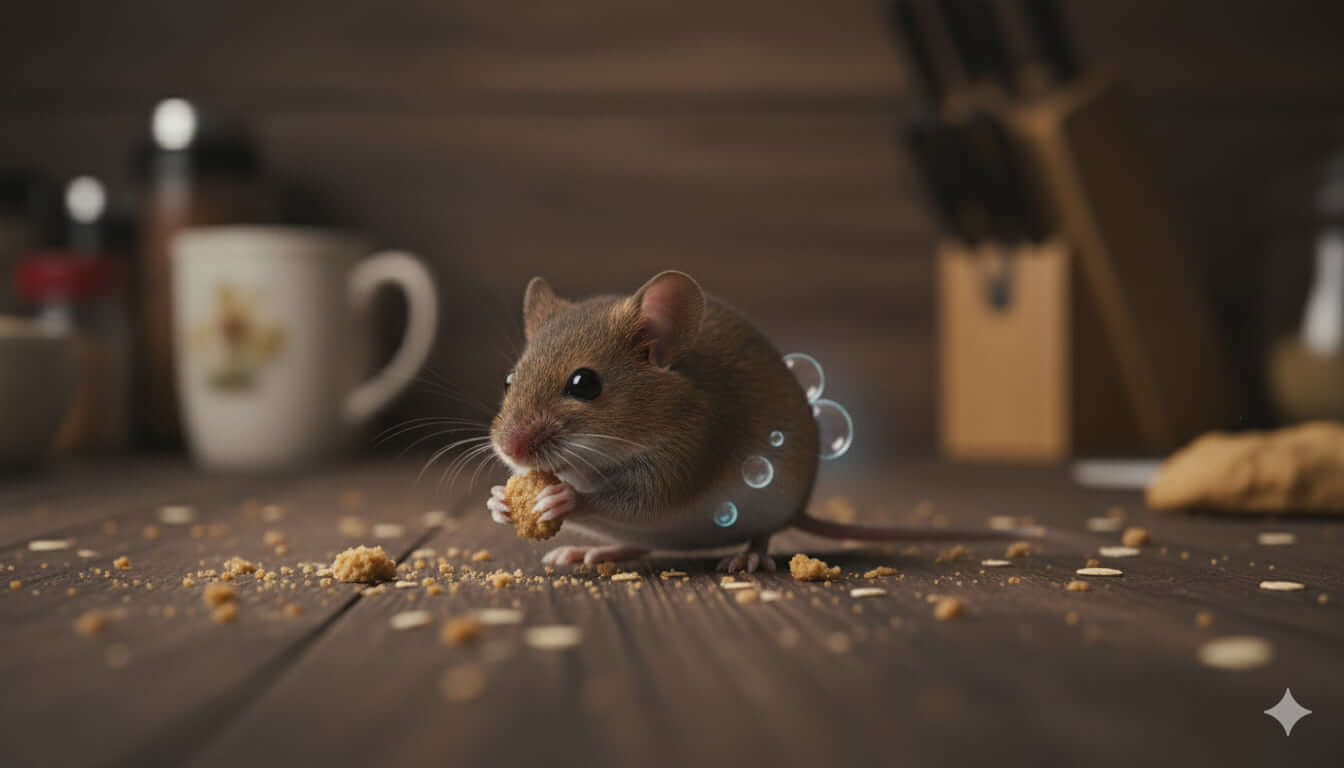Ever wondered if mice and rats can pass gas? While it may seem like a trivial question, the answer offers intriguing insights into their biology. Like all mammals, rodents experience flatulence due to the fermentation of food in their digestive systems. However, their tiny size means the gas produced is minimal and largely undetectable.
This post delves into how their digestive systems work, what causes their gas, and why their diet plays such a significant role. From diet to pest control tips, we’ll explore everything you need to know about rodent flatulence and its impact on keeping these pests at bay.
The Digestive Systems of Mice and Rats
To understand whether rodents can pass gas, we first need to look at how their digestive systems work. Both mice and rats have a system that is, in some ways, similar to other mammals, but with key differences that are crucial to this topic.
- Mouth and Esophagus: Digestion begins in the mouth, where food is chewed and mixed with saliva. It then travels down the esophagus to the stomach.
- Stomach: Rodents have a simple, single-chambered stomach where food is broken down by acids and enzymes.
- Small Intestine: This is where the majority of nutrient absorption takes place.
- Cecum: This is a large pouch located at the junction of the small and large intestines. The cecum is particularly important in rodents. It houses a vast population of bacteria that ferment fibrous plant materials that the rodent cannot digest on its own. This fermentation process is a major source of gas production in many animals.
- Large Intestine and Colon: After the cecum, the remaining material moves into the large intestine, where water is absorbed before waste is excreted.
The key takeaway here is the cecum. The bacterial fermentation that happens within it is the primary source of gas in herbivores and omnivores, and rodents are no exception.
Do Mice Pass Gas?
Yes, mice do pass gas. Scientific research has confirmed that the fermentation process in their cecum produces gases like hydrogen and methane. This gas needs a way to escape, and it does so through flatulence.
However, the amount of gas a mouse produces is very small. Because of their tiny size, you are highly unlikely to ever hear or smell a mouse fart. The volume is so minimal that it dissipates into the air almost instantly. While they are physiologically capable of passing gas, it’s not a noticeable event for humans.
Research: NCBI – The Digestive System of Rodents
Do Rats Pass Gas?
The answer for rats is also yes. Like mice, rats have a cecum where bacterial fermentation produces gas. In fact, due to their larger size and more varied diet, rats can produce a more significant amount of gas compared to mice.
A fascinating and widely referenced study from the 1970s by P. M. G. Harris and P. J. Hornby directly investigated this question. The researchers fed rats a diet that included baked beans a food notorious for causing flatulence in humans.
The study concluded that rats do indeed pass gas, and that diets high in certain carbohydrates can increase the volume of that gas. So, the next time you see a rat near a discarded can of beans, you know what might be happening later.
Research: 1970s Study on Rats and Gas Production
The Composition of Rodent Flatulence
The gas produced by mice and rats is similar in composition to that of other mammals. It’s primarily a mix of odorless gases, but can also contain trace amounts of smelly compounds.
Odorless Gases: The bulk of rodent flatulence is made up of nitrogen, oxygen, carbon dioxide, hydrogen, and methane. These are natural byproducts of digestion and bacterial fermentation.
Sulfurous Compounds: The characteristic “rotten egg” smell associated with flatulence comes from sulfur-containing gases like hydrogen sulfide. These are produced when bacteria break down sulfur-rich amino acids found in certain foods. The presence and concentration of these compounds depend heavily on the rodent’s diet.
So, while a rodent’s fart is mostly odorless, what it has recently eaten could technically make it smell.
The Role of Diet in Gas Production
Diet is the single most important factor influencing how much gas a rodent produces. Just like in humans, certain foods are more likely to cause gas than others.
High-Fiber Foods: Foods rich in complex carbohydrates and fiber, such as grains, seeds, and plant matter, require extensive fermentation in the cecum. This process naturally produces more gas.
Legumes and Vegetables: As the baked bean study showed, foods like beans, lentils, and certain vegetables can significantly increase gas production in rats.
Human Food Scraps: Rodents living in urban environments often consume human food waste. Foods high in sugar, fat, and processed ingredients can disrupt their digestive systems and lead to increased gas and other digestive issues.
In a controlled lab setting, rodents on a consistent, simple diet produce a predictable amount of gas. In the wild or in a home, where their diet is varied and unpredictable, their gas production can fluctuate significantly.
Research: High-Fiber Foods and Gas Production in Rats
Health Implications of Rodent Flatulence
For the most part, passing gas is a normal and healthy bodily function for mice and rats. It’s a necessary process to release the byproducts of digestion. However, an inability to pass gas can be a serious health problem.
One of the most significant physiological constraints in rodents is that they cannot vomit. This is due to a powerful barrier between their esophagus and stomach and a lack of the necessary brain circuitry to coordinate the muscle contractions required for vomiting. Because they can’t throw up, any toxic substance they ingest must pass all the way through their digestive system.
This inability to vomit also means that any excessive gas buildup has only one way to go: out the back. If, for some reason, gas becomes trapped, it can lead to a painful and potentially fatal condition known as bloat.
Research: Digestive System of Mice and Rats
Addressing Rodent Infestations
Understanding the digestive habits of rodents might seem like a purely academic exercise, but it has practical applications, particularly in pest control. Since rodents are attracted to a wide variety of food sources, effective pest management starts with sanitation.
- Secure Food Sources: Store all food, including pet food, in airtight containers.
- Clean Up Crumbs: Regularly sweep and vacuum floors, especially in the kitchen and dining areas.
- Seal Garbage Cans: Use trash cans with tight-fitting lids to prevent rodents from accessing food waste.
- Seal Entry Points: Inspect your home for cracks and holes in the foundation, walls, and around pipes. Seal any openings to prevent rodents from getting inside.
By limiting their access to food, you make your home a less attractive place for mice and rats, which is the most effective way to prevent an infestation.
The Bottom Line on Rodent Gas
So, can mice and rats pass gas? The answer is a definitive yes. Their digestive systems, complete with a fermenting cecum, produce gas as a natural byproduct of breaking down their food. While you’re not likely to ever notice it, this biological process is constantly happening.
This seemingly silly question opens up a window into the complex world of rodent biology. It highlights the importance of diet, the unique limitations of their digestive tracts (like the inability to vomit), and reinforces the practical steps we can take to keep these gassy critters out of our homes.

























